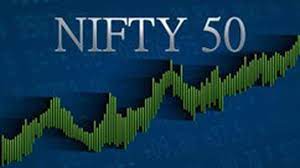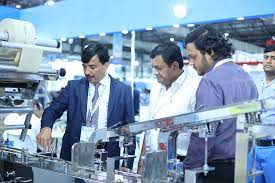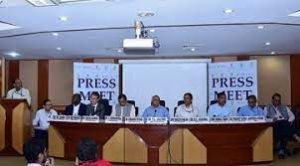Today’s Current Affairs: 14th Sep 2023 for UPSC IAS exams, State PSC exams, SSC CGL, State SSC, RRB, Railways, Banking Exam & IBPS, etc
Table of Contents
World Duchenne Muscular Dystrophy Day 2023:

World Duchenne Muscular Dystrophy Day was observed by the Department of Empowerment of Persons with Disabilities (DEPwD).
- World Duchenne Muscular Dystrophy Day is observed on the Seventh of September each year to raise awareness about Duchenne muscular dystrophy.
- The purpose of the day is to support efforts that will improve the quality of life for those who have dystrophinopathies through education, advocacy, and social inclusion.
- Duchenne Muscular Dystrophy is a rare genetic disorder that results from an X-chromosome mutation.
- It was first described by the French neurologist Guillaume Benjamin Amand Duchenne in 1860.
- It is characterised by progressive muscle degeneration and weakness due to alterations of a protein called dystrophin that helps keep muscle cells intact.
- It is a multi-systemic condition affecting many parts of the body, that results in the deterioration of the skeletal, heart, and lung muscles.
- It primarily affects males, while females are typically carriers.
- Symptoms:
- It can begin as early as age 2 or 3, first affecting the proximal muscles(those close to the core of the body) and later affecting the distal limb muscles (those close to the extremities).
- Usually, the lower external muscles are affected before the upper external muscles
- The affected child might have difficulty jumping, running, and walking.
- Treatments: Presently available treatments are gene therapy, exon skipping, stop codon read-through and gene repair.
Overnight Index Swap:

Indian overnight index swap (OIS) rates rose to their highest levels in 10 months due to offshore payments and triggering of stop losses.
- Overnight Index Swap is a derivative instrument where returns under a fixed-rate asset are swapped against a predetermined published index of a daily overnight reference rate for an agreed period of time.
- The primary purpose of an OIS is to manage interest rate risk, particularly the risk associated with fluctuations in the overnight lending rate.
- An overnight index swap rate is calculated each day.
- This rate is based on the average interest rate institutions with loans based on the overnight rate have paid for that day.
- These are instruments that allow financial institutions to swap the interest rates they are paying without having to refinance or change the terms of their existing loans.
- Typically, when two financial institutions create an overnight index swap, one of the institutions is swapping an overnight (floating) interest rate, and the other institution is swapping a fixed short-term interest rate.
- To get the swap rolling, both firms would agree to continue servicing their loans, but at the end of a specified time period, whoever ends up paying less interest will make up the difference to the other firm.
Dinkinesh Asteroid:

NASA’s Lucy spacecraft has captured its first images of the main belt asteroid Dinkinesh, marking the beginning of a 12-year voyage.
- Dinkinesh asteroid was discovered in 1999 by the LINEAR survey.
- Dinkinesh is a slow rotator with a moderately large light-curve amplitude.
- It is an S-type asteroid, which means it is composed mainly of silicates and some metal.
- It will be the first fly-by target of the Lucy mission on November 1, 2023, during its cruise to the Trojan Clouds.
- The observations were made by Lucy’s high-resolution camera, the Lucy Long Range Reconnaissance Imager ( L’LORRI instrument ).
Lucy Mission:
- It was launched by NASA from the Cape Canaveral Space Force Station in Florida in 2021.
- It is a 12-year missionwhich will take close observations of nine of Jupiter’s Trojans and two main belt asteroids along with that.
- It is the first spacecraft sent to study the Trojan asteroids, which orbit the Sun in the same path that the planet Jupiter takes.
- It has recently captured images of Eurybates, Polymele, Leucus and Leucus asteroids.
NSE Nifty 50 : Cross The 20,000 Mark

The NSE Nifty 50 recently managed to cross the 20,000 mark for the first time.
- NIFTY is a market index introduced by the National Stock Exchange (NSE).
- It is a blended word – National Stock Exchange and Fifty coined by NSE.
- Nifty was established in 1996 under the name CNX Nifty.
- Further, in 2015, it was renamed Nifty 50.
- NIFTY 50 is a benchmark-based index and the flagship of NSE.
- It represents the performance of the 50 largest and most actively traded stocks listed on the NSE.
- These 50 largest companies are from different industrial sectors and collectively represent the Stock Market and Economic Trends of India.
- It is one of the two main stock market indices in India, the other being SENSEX, a product of the Bombay Stock Exchange (BSE).
Stock Index:
- A stock index is a measurement of the changes that take place in the stock market.
- It measures price movement and market performance.
- To create an index, one has to group some stocks from a list of stocks with similar characteristics.
- This grouping of stocks can be based on the type of industry, total market capitalization, or size of the company.
West Coast Refinery Project:

India and Saudi Arabia recently agreed to speed up the implementation of the $50 billion West Coast refinery project.
- West Coast Refinery Project first conceptualised in 2014, the West Coast refinery project, also known as the Ratnagiri Refinery and Petrochemicals Ltd. (RRPCL), was envisioned as India’s largest greenfield refinery with a capacity of 60 million tonnes per annum and is touted to become the largest integrated refinery and petrochemical facility in the world.
- The project is supposed to be set up on India’s western coast, specifically in Ratnagiri, Maharashtra.
- The refinery is expected to produce around 1.2 million barrels of oil a day when completed, alongside the various petroleum products that will be produced by attached petrochemical plants.
- Three of India’s leading government-owned public sector undertakings in the oil and gas sector came together in a joint venture partnership called RRPCL.
- RRPCL is a 50:25:25 joint venture formed in 2017 by India’s three national oil companies, Indian Oil Corporation Limited (IOCL), Bharat Petroleum Corporation Limited (BPCL), and Hindustan Petroleum Corporation Limited (HPCL).
- In 2019, Saudi Aramco and the Abu Dhabi National Oil Company (ADNOC) decided to get involved as well, collectively acquiring a 50 percent stake in the project, which is estimated to be worth around Rs 3 lakh crore purely in set-up costs.
17th Edition Of ANUTEC:

At the 17th edition of ANUTEC – International FoodTec India, held in Mumbai, prominent figures from the industry and government unveiled a promising future for the food processing sector in India.
- It is on a remarkable trajectory of growth, poised to become one of the key drivers of the nation’s economy.
- The food processing sector is a crucial component of the overall food supply chain.
- It involves the transformation of raw agricultural and livestock products into processed and value-added food products that are suitable for consumption.
- This sector encompasses a wide range of activities, technologies, and processes aimed at making food products safer, more convenient, and longer-lasting, while also enhancing their flavor and nutritional value.
- The Food processing sector significantly contributes to India’s economy, accounting for 13% of exports and 6% of industrial investment.
- The sector has attracted substantial foreign direct investments (FDI), with USD 4.18 billion pouring in from 2014 to 2020, indicating confidence in its future prospects.
- It is expected to generate a whopping 9 million jobs by 2024.
- Also, by 2030, India is set to become the world’s fifth-largest consumer of food and food technology, as household consumption quadruples.
National Strategy For Robotics:

The Ministry of Electronics and Information Technology (MeitY) in India has released a draft “National Strategy for Robotics” (NSR) aimed at strengthening the innovation cycle of robotic technology and fostering India’s leadership in robotics by 2030.
- Robotics deals with the design, construction, operation, and application of robots coupled with computer systems for their control, sensory feedback, and information processing.
- According to the World Robotics Report for the year 2022, India ranks 10th globally in terms of annual industrial installations of robots.
- India’s strengths in Future of Work (Tech Economy 0) include robotics, AI, IoT, cloud computing, supply chain 4.0, 3D printing, big data, digital payments, etc
- Applications in Agriculture: Robotics in agriculture: Autonomous precision seeding, Micro-spraying robots, Weed removal robots, Drones, Robot-assisted precision irrigation.
- Human-Automation Balance: Balancing human interface and automation, e.g., collaborative robots (Cobots) working alongside skilled workers.
- Upskilling of migrant workers for greater efficiency.
- Employment Scope: Leading sectors: manufacturing, pharmaceuticals, packaging, FMCG, and inspection
Draft NSR include:
- A framework for implementing robotics in sectors like manufacturing, agriculture, healthcare, and national security, aligning with the Make in India 2.0 Framework
- The Ministry of Electronics and Information Technology (MeitY) will serve as the nodal agency for robotics, overseeing the NSR through the ‘National Robotics Mission’ (NRM).
- Core Areas identified by NSR Manufacturing:
- Logistics and Warehousing automation, Process Optimization etc.
- Healthcare: Surgical Robots, telemedicine area, etc.
- Agriculture: Crop scouting, spot Spraying, etc
- National Security: Combat robots, Mine Detection etc.
- Interventions Fiscal and non-fiscal interventions by the NRM to support innovation in robotics, including funding mechanisms for start-ups and export promotion.
- Establishment of a regulatory framework led by the Robotics Innovation Unit (RIU) for proper governance and regulation of robotics technology.
- Ensuring Regulatory Sandboxes and development of robotics industrial zones.
- Creation of Centres of Excellence (CoEs) in Robotics for foundational and applied research, with private sector involvement in application-based research.
- Advisory Support Plans for providing advisory support to start-ups, utilizing research potential in higher education institutions, and developing robotics industrial zones.
- A proposed policy where the central government acts as a demand aggregator for domestically manufactured robotic systems, incentivizing domestic production.
Strategic Partnership Council:

Prime Minister Narendra Modi and Saudi Arabia’s Crown Prince Mohammed bin Salman (MBS) recently chaired the first meeting of the India-Saudi Arabia Strategic Partnership Council (SPC).
- Strategic Partnership Council established in 2019, aims to enhance the relationship between the two countries and has two main pillars: the Committee on Political, Security, Social, and Cultural Cooperation and the Committee on Economy and Investments.
- These committees have four levels of engagement, including summit-level meetings, ministerial-level discussions, senior officials’ meetings, and joint working groups.
- During their recent meeting, India and Saudi Arabia agreed to expedite the $50-billion West Coast refinery project and identified areas such as energy, defence, semiconductor, and space for intensified cooperation.
- West Coast Refinery Project aims to set up Asia’s largest refinery in Ratnagiri, Maharashtra.
- It is a trilateral project between ARAMCO (Saudi), ADNOC (UAE) and Indian companies.
First Global Symposium On Farmers Rights:

President Droupadi Murmu inaugurated the First Global Symposium on Farmers’ Rights in New Delhi recently.
First Global Symposium on Farmers’ Rights:-
- Venue: ICAR Convention Centre, National Agricultural Science Centre, New Delhi.
- Date: September 12 to 15, 2023.
- The proposal to hold the first GFSR was mooted by the Government of India at the Ninth Session of the Governing Body (GB9) of the International Treaty on Plant Genetic Resources for Food and Agriculture (International Treaty) held in India in September 2022, which was agreed by the FAO.
- Organized by: Secretariat of the International Treaty on Plant Genetic Resources for Food and Agriculture (International Treaty) of the Food and Agriculture Organization (FAO), Rome.
- Hosted by: Ministry of Agriculture and Farmers Welfare, Government of India, in collaboration with the Protection of Plant Varieties and Farmers’ Rights (PPVFR) Authority, Indian Council of Agricultural Research (ICAR), ICAR-Indian Agricultural Research Institute (IARI), and ICAR-National Bureau of Plant Genetic Resources (NBPGR).
- Objective: to address critical issues related to farmers’ rights and their essential role in global food security and agriculture.
- Eminent scientists and resource persons will participate from 59 countries across the globe.
- They will deliberate on how to recognize and reward the enormous contribution that local and indigenous communities and farmers of all regions of the world have made to the conservation and development of plant genetic resources (PGR).




